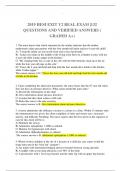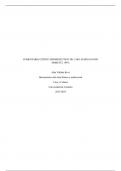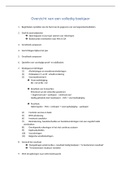Samenvatting
Summary Operations Management summeary year 1 ( book: Hospitality Experience )
In dit document is een samenvatting van hoofdstuk 1 tot en met 4 van het boek Hospitality Experience. Daarnaast zijn de lectures besporken en de workshops. Zitten ook een paar examen vragen in.
[Meer zien]














